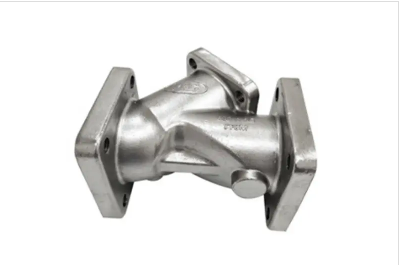Mobile:+86-311-808-126-83
Email:info@ydcastings.com
a356 aluminum die casting
A356 Aluminum Die Casting An Overview
A356 aluminum die casting has gained significant popularity in various industrial applications due to its excellent mechanical properties, lightweight nature, and versatility. It is particularly known for its suitability in complex, high-precision components that require both strength and durability. This article explores the advantages, application areas, and manufacturing process of A356 aluminum die casting.
Understanding A356 Aluminum Alloy
A356 aluminum is a modified version of the 356 alloy, primarily known for its high strength-to-weight ratio, good corrosion resistance, and excellent castability. This alloy is primarily composed of silicon (6.5-7.5%) and magnesium (0.3-0.45%), with small amounts of other elements such as iron, copper, and manganese. The presence of silicon enhances fluidity during the casting process, while magnesium contributes to the alloy's strength, making A356 aluminum an ideal material for die casting.
Advantages of A356 Aluminum Die Casting
1. High Strength and Durability A356 aluminum die casting exhibits excellent mechanical properties, including high tensile strength, which often surpasses that of other aluminum alloys. This makes it suitable for applications where structural integrity is critical.
2. Lightweight Nature One of the standout features of aluminum is its low density. A356 aluminum components are lightweight, making it an ideal choice for industries such as automotive and aerospace, where reducing weight can lead to improved efficiency and performance.
3. Corrosion Resistance The alloy possesses strong corrosion-resistant properties, making it apt for use in harsh environments. This resistance is particularly beneficial for components exposed to moisture or corrosive substances.
4. Excellent Castability A356 aluminum can be easily molded into complex shapes, which allows for intricate designs that meet specific functional requirements. This characteristic reduces the need for additional machining and post-processing, thus lowering production costs and time.
5. Thermal Conductivity The alloy also exhibits good thermal conductivity, making it suitable for thermal management applications, including heat sinks and housings for electronic components.
Applications of A356 Aluminum Die Casting
Due to its numerous advantages, A356 aluminum die casting finds applications in various industries
- Automotive Industry The automotive sector extensively uses A356 aluminum die-cast parts for engine blocks, transmission casings, and other components where weight reduction and heat dissipation are essential.
a356 aluminum die casting

- Aerospace Industry In aerospace applications, where material performance is vital, A356 aluminum provides the required strength without adding significant weight, making it suitable for various aircraft components
.- Consumer Electronics The lightweight and robust nature of A356 aluminum makes it ideal for enclosures and components in consumer electronics, providing both aesthetic appeal and functionality.
- Marine Applications Components exposed to saltwater environments benefit from the corrosion resistance of A356 aluminum, making it a preferred choice for marine hardware and fittings.
The Manufacturing Process
The manufacturing of A356 aluminum die casting involves several steps
1. Mold Design and Preparation A die is designed based on the specifications of the part to be produced. Molds are typically made from steel to withstand repeated use at high temperatures.
2. Melting Aluminum ingots are melted in a furnace at high temperatures, usually around 700-800°C.
3. Injection The molten aluminum is injected under high pressure into the prepared molds. This high-pressure injection ensures that the molten metal fills even the tiniest features of the mold and solidifies quickly.
4. Cooling and Ejection Once the aluminum has solidified, the mold is cooled, and the die-cast part is ejected.
5. Post-Processing After ejection, parts may undergo additional processes such as machining, finishing, or coating to meet specific tolerances and surface finish requirements.
Conclusion
A356 aluminum die casting stands out as a versatile and reliable material choice for various applications, particularly in industries demanding high-performance components. Its combination of strength, lightweight characteristics, and excellent corrosion resistance positions it as a key player in advancing modern manufacturing techniques. As industries continue to evolve, the potential uses and technologies surrounding A356 aluminum die casting are likely to grow, paving the way for innovation in design and production.
-
Why Should You Invest in Superior Pump Castings for Your Equipment?NewsJun.09,2025
-
Unlock Performance Potential with Stainless Impellers and Aluminum End CapsNewsJun.09,2025
-
Revolutionize Your Machinery with Superior Cast Iron and Aluminum ComponentsNewsJun.09,2025
-
Revolutionize Fluid Dynamics with Premium Pump ComponentsNewsJun.09,2025
-
Optimizing Industrial Systems with Essential Valve ComponentsNewsJun.09,2025
-
Elevate Grid Efficiency with High-Precision Power CastingsNewsJun.09,2025











